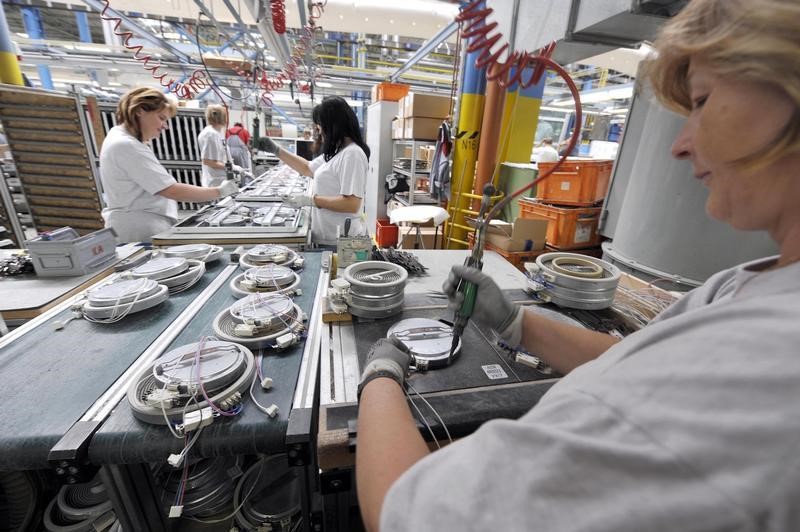By Tetsushi Kajimoto
TOKYO (Reuters) - Japan's core machinery orders in May unexpectedly grew for a third straight month, with the total value reaching a 7-year high and adding to recent evidence of a steady pickup in business spending seen as vital for a durable economic recovery.
The 0.6 percent rise in core orders, a highly volatile data series regarded as an indicator of capital spending in the coming six to nine months, beat economists' median estimate of a 5.0 percent drop, Cabinet Office data showed.
That followed rises of 3.8 percent in April and 2.9 percent in March.
The Cabinet office said the value of core orders reached its highest levels since June 2008.
The data came a week after the central bank's key quarterly tankan survey that showed robust capital spending plans by big companies, a welcome sign for policymakers who are eager to see firms invest their hefty profits in plant, equipment and higher wages.
Capital spending had been a missing link in the world's third largest economy as policymakers struggle to generate a virtuous cycle of investment, wages growth and consumer spending to vanquish years of economic stagnation and deflation.
While the Greek debt crisis and China's slowdown have clouded the outlook for external demand, capital spending is expected to be underpinned by a tightening job market and domestic demand, which has shaken off a slump caused by last year's sales tax hike.
"Machinery orders turned out pretty strong. That indicates a positive trend for capital spending for the time being," said Hidenobu Tokuda, senior economist at Mizuho Research Institute.
"If China's economy suffers a marked slowdown, that could cause Japanese firms to put off their capital spending plans though."
Compared with a year earlier, core orders, which exclude those of ships and electric power utilities, rose 19.3 percent in May, versus a 16.3 percent gain expected by analysts.
The Cabinet Office stuck to its view that machinery orders are picking up.
Japanese firms had long been hesitant to boost capital spending despite ultra-low borrowing costs made possible by years of loose money policies from the Bank of Japan.
However, capital expenditure has recently shown signs of life. The BOJ tankan last week showed that big companies plan to boost capital expenditure at the fastest pace in a decade in the current fiscal year to March 2016.
The BOJ is expected to sit tight when it meets to review policy next week, but many analysts expect the bank to be forced into deploying additional stimulus later this year as inflation is seen struggling to accelerate towards its ambitious 2 percent target.
